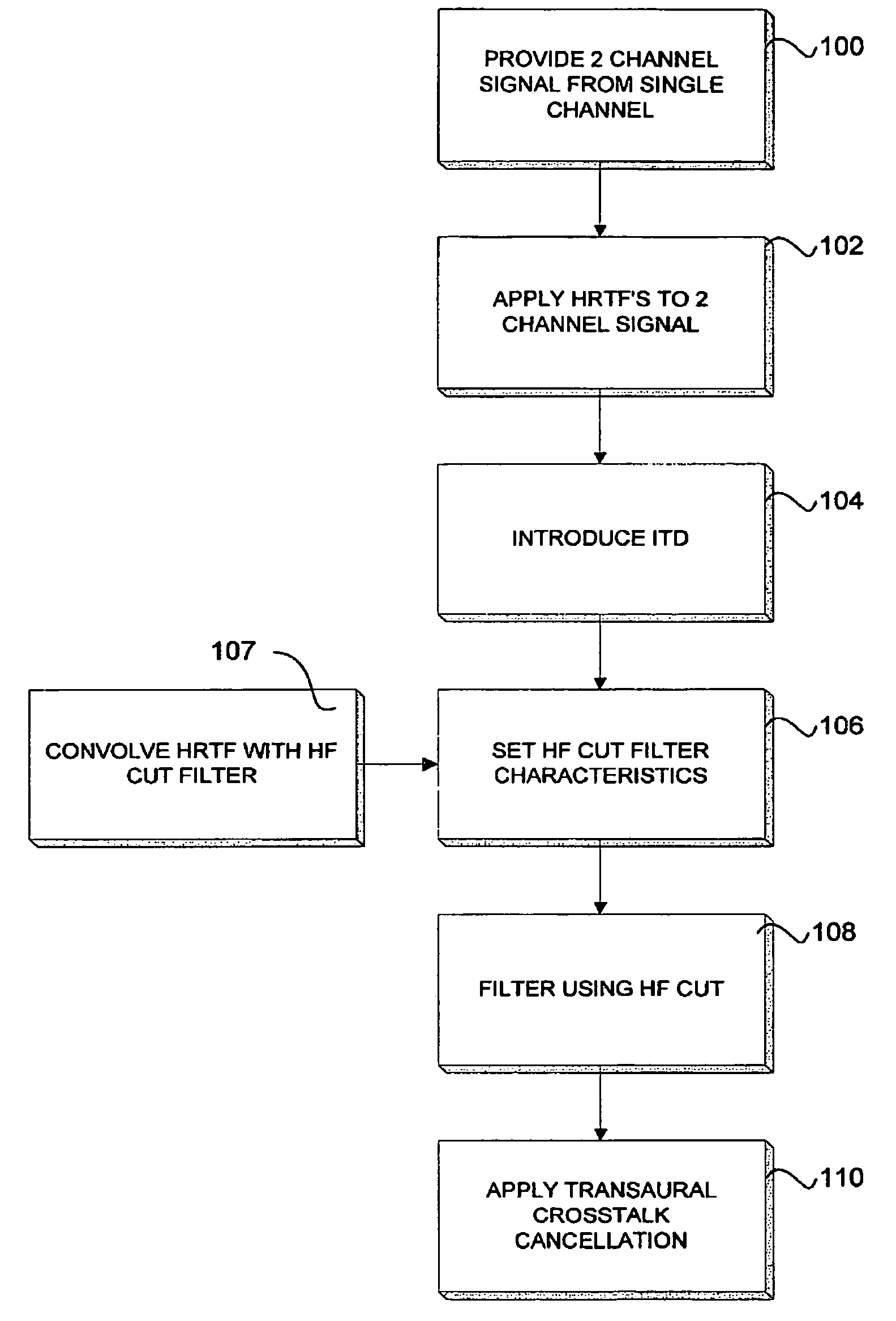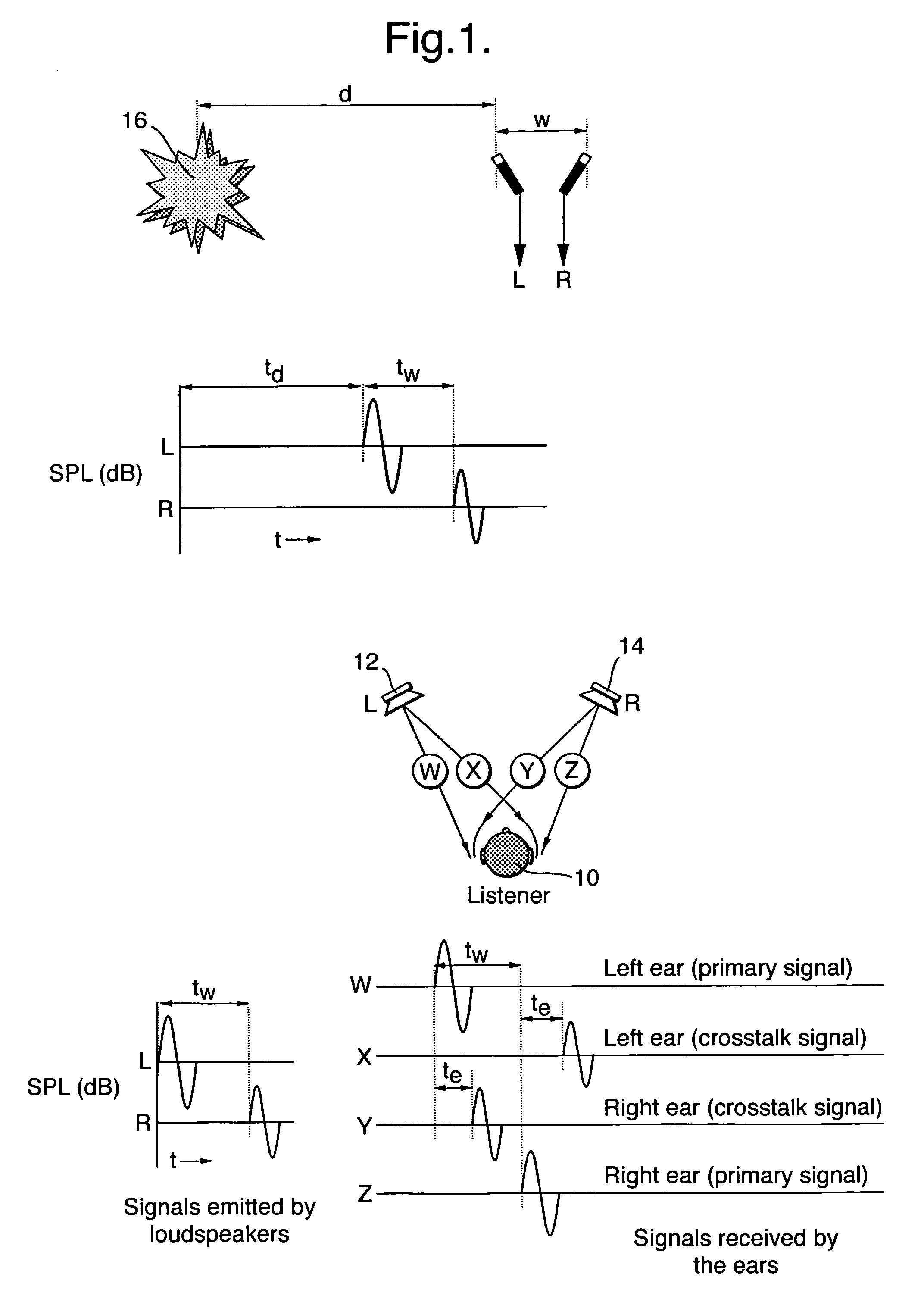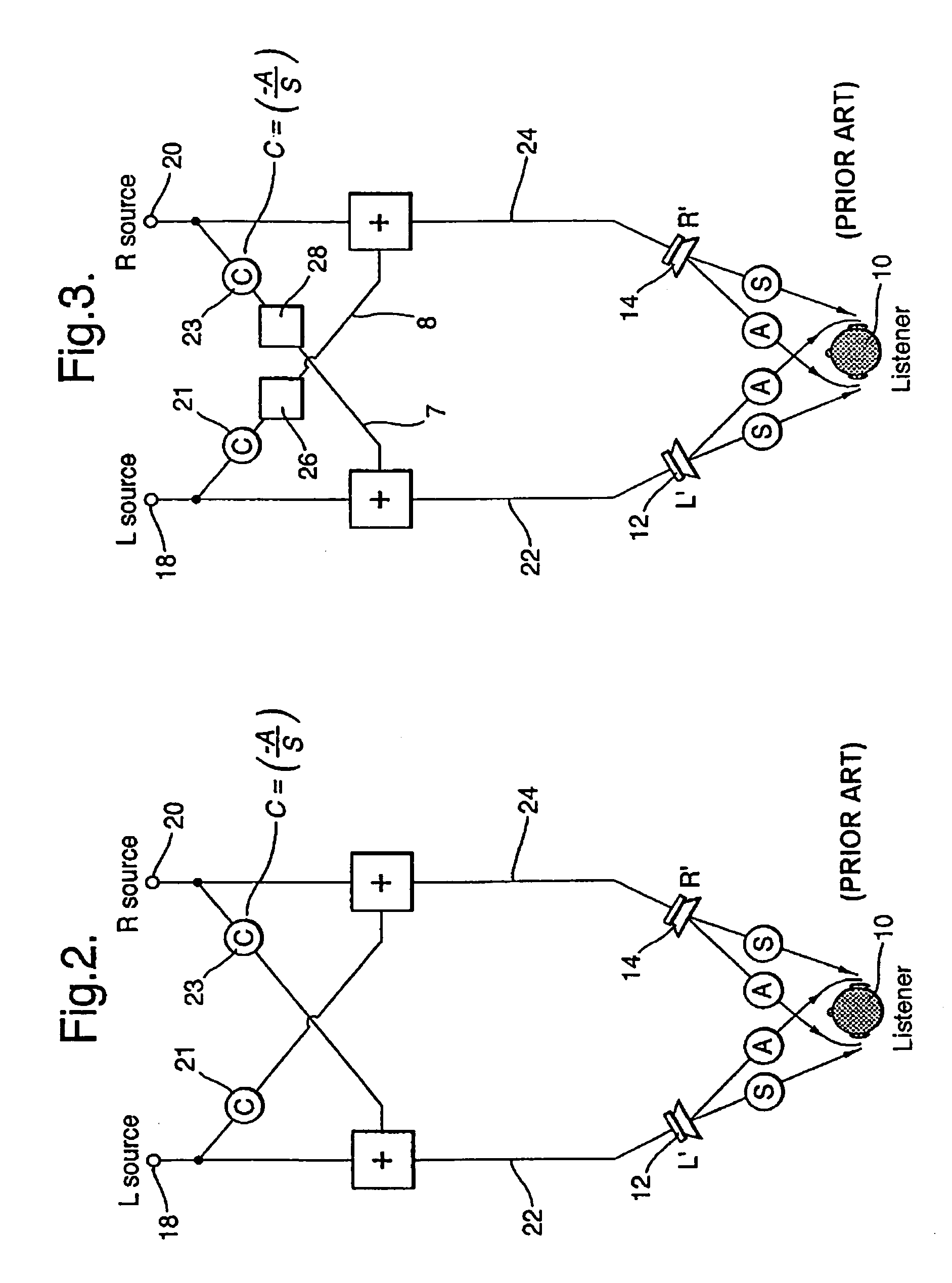Method of improving 3D sound reproduction
a three-dimensional sound and sound processing technology, applied in the direction of stereophonic systems, stereophonic arrangments, electrical appliances, etc., can solve the problems of difficult to differentiate between a sound source directly in front of the listener, difficult to synthesise positions, and inability to perceive full 3d effects, so as to reduce distracting high-frequency components and improve 3d sound processing
- Summary
- Abstract
- Description
- Claims
- Application Information
AI Technical Summary
Benefits of technology
Problems solved by technology
Method used
Image
Examples
Embodiment Construction
[0047]By way of extensive experimentation, the inventors have discovered that in order to enable effective placement of a virtual sound source behind a listener from a pair of conventional loudspeakers, high frequency (HF) components of the virtual sound source which are not crosstalk-cancelled (or which are inadequately crosstalk-cancelled) must be reduced or eliminated in an appropriate manner. These HF components are perceived to emanate from frontal locations and are distracting for the listener.
[0048]As stated previously, another reason for reducing the HF components of virtual sound sources to be positioned behind the listener, is that, in practice, such components of a rearward sound source are obstructed from reaching the auditory canal by the pinna, and their magnitude is therefore reduced for rearward sound sources. One way of reducing HF components is to apply a global high-frequency (HF) reduction to the entire audio chain. This, however, would not be a solution, because...
PUM
 Login to View More
Login to View More Abstract
Description
Claims
Application Information
 Login to View More
Login to View More - R&D
- Intellectual Property
- Life Sciences
- Materials
- Tech Scout
- Unparalleled Data Quality
- Higher Quality Content
- 60% Fewer Hallucinations
Browse by: Latest US Patents, China's latest patents, Technical Efficacy Thesaurus, Application Domain, Technology Topic, Popular Technical Reports.
© 2025 PatSnap. All rights reserved.Legal|Privacy policy|Modern Slavery Act Transparency Statement|Sitemap|About US| Contact US: help@patsnap.com



